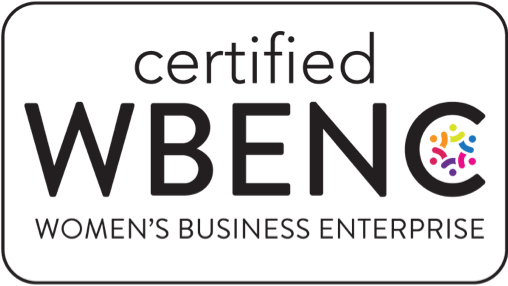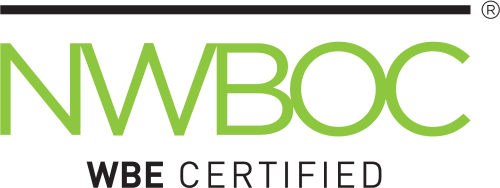Case studies
Unconventional consulting leads to unbelievable results
At Eagle Hill, we do more than sell solutions. We solve business problems. We work side by side with clients to truly understand their unique needs and tailor our approach—in the public and private sectors alike.

Case studies
See how we are providing impact for our clients. From boosting employee retention to planning market entry, our years of creative and strategic experience have helped clients across industries reach their potential.
Transportation
Operating model transformation drives operational efficiency for a global airline
Modernizing a century-old operating model boosted efficiency and transformed experiences for a global airline.
Emergency management
Driving consistency in national emergency management operations
Enhancing emergency management nationwide with consistent NIMS standards built through collaboration and strong program management.
Emergency management
Using scenario-based planning to redefine readiness in emergency response
Emergency management leaders need a common definition of readiness to navigate complexity, align resources, and plan effectively for evolving threats.
Financial services
Capacity-based planning meets technology enablement
Financial institutions can boost efficiency and resource alignment by adopting capacity-based planning tools and leveraging workforce data. The right technology and insights enable smarter, data-driven decisions.
Nonprofit
Process optimization boosts global nonprofit’s procurement and contracting efficiency
A global nonprofit improved procurement efficiency and transparency through process mapping and a new procure-to-pay system.
Financial services
Technology adoption helps financial institution reduce risk and improve efficiency
To succeed in digital transformation, financial institutions need tech adoption programs that foster employee understanding, buy-in, and sustained use.
Emergency management
Transforming emergency management training for scalability
Agencies need clear, mission-ready emergency training. Eagle Hill helped one agency streamline its curriculum—a model others can follow to boost preparedness.
State and local government
Leading a municipal electricity utility from technology strategy to technology adoption
A municipal electricity utility improved customer satisfaction and employee effectiveness through a comprehensive technology roadmap.
Federal government
Forecasting future work demand using advanced data analytics
Discover how we partnered with a federal health agency to implement advanced data analytics, enabling proactive workforce planning, and data-driven decisions to align resources with demand and advocate for additional funding.
State and local government
King County Metro strengthens emergency management with data-driven program evaluation
We helped King County Metro evaluate its security and emergency management programs, using data-driven insights to enhance operations, align with best practices, and support future growth.
Technology, media, and entertainment
Managing technology change: Aligning organizational structure and new digital technology for success
A media organization overcame technology change management challenges by realigning processes, restructuring teams, and achieving significant operational improvements.
Technology, media, and entertainment
Identifying the right Enterprise Resource Planning (ERP) system for a sports franchise
To scale its fan experience without expanding back-office complexity, a Major League Baseball franchise needed the right ERP solution. We helped them navigate the vendor selection process, staying focused on their priorities and future vision—knocking it out of the park.
Federal government
Improving employee retention and hiring through data analytics and visualization at a federal agency
We provided a large federal health agency with actionable solutions to reduce turnover and increase efficiency by uncovering the root causes of retention, hiring, and training challenges through data analysis and visualization.
Federal government
Workflow automation solutions unlock significant efficiency gains for government agency
We partnered with a large federal agency to design and implement a streamlined, user-friendly task tracking system that enhances performance through workflow automation.
Federal government
Building an enterprise recruitment program office at a large federal agency for a streamlined hiring process
Learn how Eagle Hill helped HHS build an Enterprise Recruitment Program Office (ERPO) to streamline hiring, cut costs, and retain top talent in 3.5 months.
Federal government
Improving hiring at a large federal agency through a low-cost hiring automation
Learn how Eagle Hill streamlined our client’s hiring process to increase transparency and efficiency across the hiring lifecycle, using low-cost automation & process mapping.
Federal government
Federal agency improves its hiring process to compete for top talent
Discover how a federal agency overcame hiring challenges and streamlined its hiring process to attract and secure top talent.
Nonprofit
Global nonprofit future proofs its ability to protect the planet
Discover how a leading environmental nonprofit achieved organizational transformation and success through an innovative operating model overhaul.
Federal government
Federal program evaluation poised to deliver huge ROI
We performed a program assessment and ROI analsis for a large federal regulatory agency, inclusive of identifying program evaluation KPIs, gathering and analyzing data, and identifying recommendations to significantly improve ROI.
Federal government
Leveraging data-driven strategies for employee engagement success
We partnered with the Health & Human Services' Office of Human Resources to turn unwieldy FEVS results data into actionable insights to boost employee engagement and experience.
Federal government
Optimizing inspection process unlocks 30% capacity gains for public health client
We helped one federal agency optimize their inspection process, unlocking 30% capacity gains.
Technology, media, and entertainment
Optimized Asana implementation
Optimize your Asana implementation with Eagle Hill Consulting’s Asana experts.
Technology, media, and entertainment
Seamless Asana adoption for a national retailer
We helped a client drive a seamless Asana integration that maximized value and incorporated strong user adoption, governance, and behavior change.
Federal government
Culture change unifies a federal agency
We helped map and implement a federal agency's culture change to a value-driven culture led by fairness, accountability, integrity, and respect.
Federal government
Data-driven program evaluation leads to breakthrough results
A large regulatory organization called on Eagle Hill to provide data-driven program evaluation services to aid in decision making and execution of their future state operations. See how our team maintained progress and momentum, while also safeguarding rigorous program evaluation standards.
Federal government
Improving the employee lifecycle and transitioning to the future of work
A large federal health agency called on Eagle Hill to improve their employee lifecycle process and increase employee engagement throughout. See how our team helped them battle today’s hiring challenges while planning for the future of work.
Healthcare and life sciences
Creating a future of work strategy to support hybrid work for a public health plan
We helped a public healthplan with an approach to safely reopen its office and adapt to a rapidly changing business environment and uncertain future of work.
Federal government
Enabling future decision-making through capacity planning and workload analytics
We helped a government agency create a transparent resource capacity planning function and advance workforce analytics to inform future decision-making.
Technology, media, and entertainment
Organizational design strategy for rapid growth
Anticipating continued rapid growth, an organization engaged Eagle Hill to help define an organizational design strategy and workforce planning process that would best support its goal of achieving 50% revenue growth in three years.
State and local government
Designing a new organizational structure to accommodate rapid growth
We partnered with a large public transit authority to design a new organizational structure that ensured scalability while aligning to it’s multi-billion dollar growth strategy.
Financial services
Enhanced UX research unlocks digital CX value
Eagle Hill worked with a large financial institution to develop and carry out a UX research project that helped the firm realize the customer digital experience rewards it sought to strengthen its market position.
Financial services
Maximizing ROI with agile transformation
We employed agile transformational change at scale to help an affordable housing sector company realize a better return on investment with technology and deliver value to its customers more rapidly.
Federal government
High user adoption paves way for data-driven capacity planning
We drove a highly successful user adoption strategy for a large federal health agency requiring a time reporting system for its employees to proactively comply with regulatory requirements and provide robust workforce capacity reporting.
State and local government
How a local government’s adoption of new technology yields agile way of working
Eagle Hill's approach to change management at a transformational scale helped a local government adopt new technology that yielded efficiency benefits.
Financial services
Digital transformation uses agile change management to improve CX and EX
We implemented an enterprise-wide digital transformation for a financial services organization to the Salesforce Lightning platform by using agile change management to create better customer and employee experiences.
Healthcare and life sciences
From performance management to performance acceleration
We used a data-driven approach to design a new performance management program for a health service provider that emphasizes employee feedback, elevates responsibility for performance and replaces static annual performance reviews.
Federal government
Optimizing hybrid telework at CBP through expert program and project management services
In support of the Federal Government's telework initiative, Eagle Hill worked with the U.S. Customs and Border Protection (CBP) to help employees improve efficiency while teleworking.
Nonprofit
Creating a return to work strategy for a national museum
Eagle Hill worked alongside the leadership team of a national museum to develop and manage implementation of a reopening strategy after its COVID-19 shutdown that was both comprehensive and responsive to rapid change.
Financial services
Accelerating organizational change—to the tune of a 20-point Net Promoter Score improvement
The procurement office of a large financial services organization remade its internal and external images and improved service delivery as part of an organizational transformation that focused on improving its culture.
Healthcare and life sciences
Empowering a biotech to transform its future workforce
For this global biotech company, hiring top talent is vital to deliver innovative treatments to patients around the world. Our end-to-end workforce planning solution helped diagnose how to build its future workforce, today.
Nonprofit
AI-enabled data gathering across 65 countries unlocks compelling improvement possibilities
Learn how an AI-enhanced approach helped a global nonprofit development organization build an internal operating model every bit as advanced as its external one for the most impact across both its headquarters and field offices.
Technology, media, and entertainment
Conducting a technology assessment to inform strategic planning for public media
Eagle Hill helped the Corporation for Public Broadcasting nearly double the target response rate for a comprehensive technology survey of its many member stations. The key reason? Watch our animated client story to find out.
Federal government
Developing competency models and workforce planning
We helped one highly specialized agency prepare their workforce for the future by implementing their forward-looking Human Capital Strategic Plan. Eagle Hill’s Mary Dalrymple, Director of Services and Innovation, explains how.
Healthcare and life sciences
A 20% increase in case cart accuracy puts clinicians’ focus back on patient experience
By optimizing care delivery and operations for a leading regional healthcare provider, we helped reduce case cart supply errors, empower supply chain staff, and enable clinicians to spend more of their time on their patients—and less on case cart accuracy.
Technology, media, and entertainment
Helping core values take hold
A large nonprofit saw core values as the key to staying competitive in the future—but the new values weren’t taking hold with employees. We created a plan to bring their desired culture off the pages of HR strategy and into day-to-day work life.
Financial services
Implementing competency modeling to manage change readiness
A large financial services enterprise was undergoing a significant change and needed to prepare staff for new policies. We helped the team most impacted by this change get ready and gave them ownership in the competency modeling process.
Healthcare and life sciences
Strengthening workforce planning with predictive analytics
A global drug manufacturer was growing rapidly and needed a workforce planning partner that could keep up. We developed a flexible approach that could predict position needs without losing valuable momentum as plans changed.
Nonprofit
Building a strong relationship for sustainable growth
The Alice Ferguson Foundation needed to create a long-term strategic plan to grow alongside their mission. Our team worked closely with AFF to incorporate a goal-focused plan as well as a new organizational mindset targeted at success.
Nonprofit
Standing up a performance management process to develop and recognize employees
An organization was experiencing growing pains, so we conducted our own research in order to understand employee perspectives, from the top down. We clearly defined all roles in the organization to ensure each person felt recognized and valued.
Healthcare and life sciences
Supporting adoption of a CRM implementation through best fit change management
A large healthcare organization implemented Salesforce, a huge advance for them—as long as employees were motivated to use it properly. We worked closely with management to roll out the release in stages and build up their capabilities.
Federal government
Working together to drive sustainable change at the forefront of federal purchasing
We partnered with the GSA FAS to help them transition to a category management approach to federal procurement as a way to improve customer service—leading to the fastest and most thorough reorganization in their history.
Federal government
Delivering a customer-focused organizational design
When a federal management services division needed clarity on their new mission and identity, we helped set goals, streamline processes, and design new structural models for service delivery and growth.
Healthcare and life sciences
Enhancing care delivery and operations through program management
In the face of increasing priorities and culture change, we helped one large healthcare organization roll out system-wide transformation of care delivery and perioperative supply chain operations.
Federal government
Empowering employees to strengthen service, culture, and core values
When the number one grant-making organization in the government faced sustainability concerns, we brought employees at all levels together for collaborative solutions to increase engagement, strengthen culture, and improve retention.
Nonprofit
Reimagining process, technology, and culture
A national museum’s legacy federal processes were limiting overall development as its program operations and presence grew. We applied private-sector best practices to increase flexibility and streamline operations.
Financial services
Fueling strategic growth through organizational design
When a large valuation firm wanted to drive growth across all its global service lines while still reflecting its regional business cultures, we helped transform organizational design to support a new strategic vision for its operating model.
Federal government
Reassessing organizational structure to best serve customers and employees
In just 7 weeks, we helped an HR office solve for their existing staff continuity gaps—and plan for additional process improvements in the future.
Federal government
Using data visualization and strategic planning to improve organizational performance
In the face of budgetary pressures, we aided the U.S. Customs and Border Protection’s Office of Administration in restructuring their framework with a 3-year plan to better prepare for maturing programming.
Federal government
Transforming processes and elevating morale
When one federal agency needed to rethink its processes and organizational structure, we used a sprint cycle to assess, document, and transform its environment for higher efficiency—and morale.
Federal government
Program management services help streamline financial management policy formation
Policy creation at one federal agency was a long process with no central oversight. So we created a policy council to increase accountability and shorten the pipeline for financial policy approval and implementation.
Federal government
Creatively improving work-life health + wellness programs
One agency needed to raise employee awareness of available support services. By working with them to craft an effective 5-year strategic plan for ongoing improvement, we helped get them on the path to a healthier workforce.
Technology, media, and entertainment
Designing a digital rights management system
Digital rights management has posed a major challenge for media enterprises. We helped one organization find a fluid, cost-effective solution that could reduce complexity—and eventually pay for itself.
Financial services
Improving morale and reducing high turnover
One large financial services company had a great career-mapping tool, but employee expectations weren’t aligned. We helped them close the gap by taking a transparent approach that stepped outside the box.
Technology, media, and entertainment
Conducting market entry strategy + execution
We worked with an engineering and construction firm to assess its readiness and plan their entry into the fiber-optic market, a major area for growth and development, tackling key strategic questions with a targeted approach.
Federal government
Achieving workplace transformation with change management best practices
Moving to a consolidated downtown office was a huge undertaking for this federal agency. We applied change management best practices to successfully steer the change and improve employee readiness for their “workforce of the future.”
Federal government
Facilitating a successful workforce transition and realignment through change management expertise
When organizational responsibilities shifted between agencies, we helped smooth the transition and plan for a successful merging of resources.
Federal government
Addressing human capital strategy and workforce requirements
We helped one agency create their first-ever 5 year strategic plan to find new ways to attract, retain, and develop a motivated workforce—creating a winning, repeatable process for workforce planning.
Technology, media, and entertainment
Navigating the shift to digital through organizational realignment
When organizational responsibilities shifted between agencies, we provided our change management expertise to smooth the transition and plan for a successful merging of resources.
Federal government
Building a next-generation workforce
A federal agency came to us with a vision for becoming a Best Place to Work with a flexible, innovative workforce. We helped define 5 goals, 20 initiatives, and a detailed operational plan, all reflecting its culture and people.

